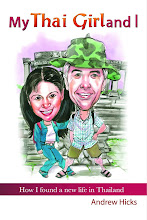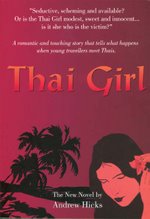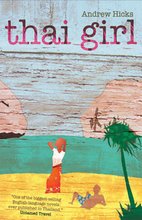



We got up early at six this morning and drove to the market just this side of the Cambodian border at Chong Jom. There were only eight of us this time including two old ladies and two small children but it was to be a pleasant family outing.
Every Saturday the market opens far too early on a site in the middle of nowhere surrounded by jungle in the hills on the border. There’s acres of vegetables on rough stalls, sold out in the open and off the back of pickups, and hundreds more permanent stalls selling second hand clothes and fabrics, tools, electrics, bicycles, curios, tigers’ teeth and just about anything you can think of. It’s a typical Asian market but a bit different for us because it has a distinctly Cambodian flavour.
Many of the stall holders are Cambodian and the crowds thronging the market stalls looked poorer than usual. Most of them are Cambodians who come into Thailand on day passes. It’s a kilometer or two to the border crossing and the tiny road through the jungle is a race track on which small motorcycles pull rough wooden trailers at high speed, carrying the market goers and all sorts of produce that’s been brought in from Cambodia to sell.
Much of the stuff in the market is Thai, such as fruit from the south and cheap manufactured good, while the rest is inexpensive Cambodian stuff for the Thais to buy. Whenever we go, our folks always buy wai for example, the rough rattan shoots that they put in delicious soups to make them taste bitter and disgusting. This is a forest product that’s no longer readily available in Thailand so it’s highly prized by them.
I was also pleased to see many beautiful mats, baskets and bamboo fish traps for sale, items which no doubt are less more expensive in Thailand where such skills must be getting scarcer and the cost of labour is relatively high.
It was hot and crowded and dirty but I always love it and I have my favourite stalls where the ladies always welcome me as a good customer. I’ve bought a number of ancient Khmer burial pots there, some beautifully turned hardwood banister posts and today I needed a new pedal for the bicycle I bought when we were at the market last time.
A problem with a big party at markets such as this is that you all lose each other and as nobody has a watch to agree a time to meet up, you risk never seeing each other again. Thank goodness for mobile phones though and while mine was mysteriously almost out of money, at least there was a signal, just! We did manage to meet up but as soon as I’d spotted one of our party, they’d disappear again and, as always, it took ages to load up and move on.
With the pickup laden and with eight on board, we headed off before ten to go to the lake and eat. Not far away from the market is a reservoir set in the border hills where tucked under the trees by the dam is a mass of grass roofed huts that look just like a village in the South Seas. This time the water was very high and many of the floors of the huts were flooded, but as we were the first to arrive to eat, there was no problem finding one.
We all settled down on the floor of our hut and the lady arrived selling quail eggs, prawns, fried insects and silkworm grubs, and much else besides. We took four or five of these for starters and crunched happily, the water only a few inches below us to clean greasy fingers. I had no worries about the tiny translucent prawns from the lake not being fresh. Mixed in with a chopped salad of herbs and chili, they were still flipping around and trying to jump off the plate.
Apart from the children, I was the only one to have a swim. Cruising along the tree-lined bank, gazing across to the hills towards the border as I lay in an old rubber tyre, it was a pleasant escape from all the stresses and unremitting pressures of village life. Well anyway, you know what I mean!
We paid the bill and drove slowly back, the ladies asking me to stop at a quiet spot so they could disappear behind a bush. The three baht demanded for the purpose back at the lake was too extortionate, they said, and should not be countenanced.
Now it’s early afternoon and the house is strangely quiet. Cat has gone off to buy some more frogs for the fish pond as they’d sold out at the market and everyone else seems to have disappeared, perhaps to the wooden house down the garden. I, needless to say, am at my computer, also working on a hand of bananas that’ll go off overnight unless I make a monkey of myself. Can you get banana poisoning? I think I’m going to find out.
















